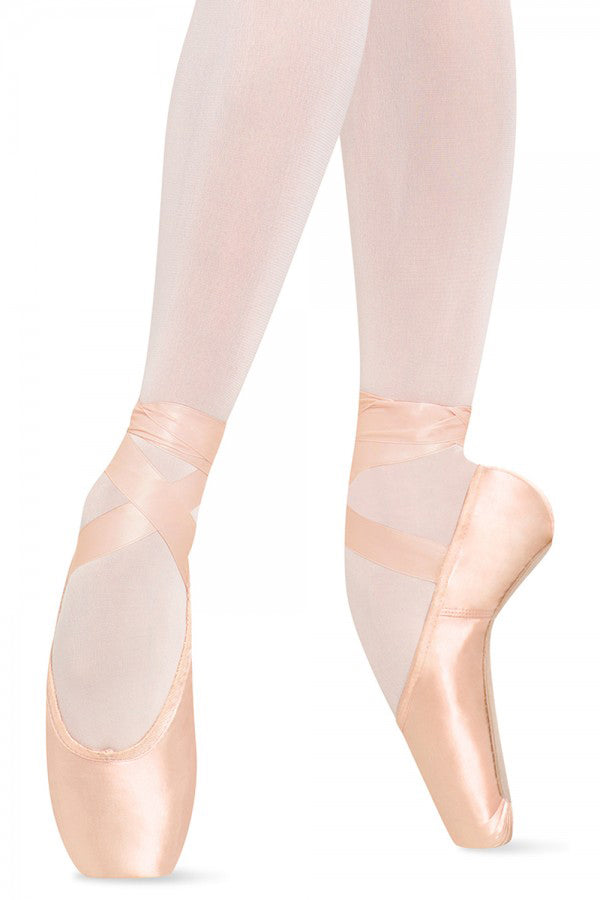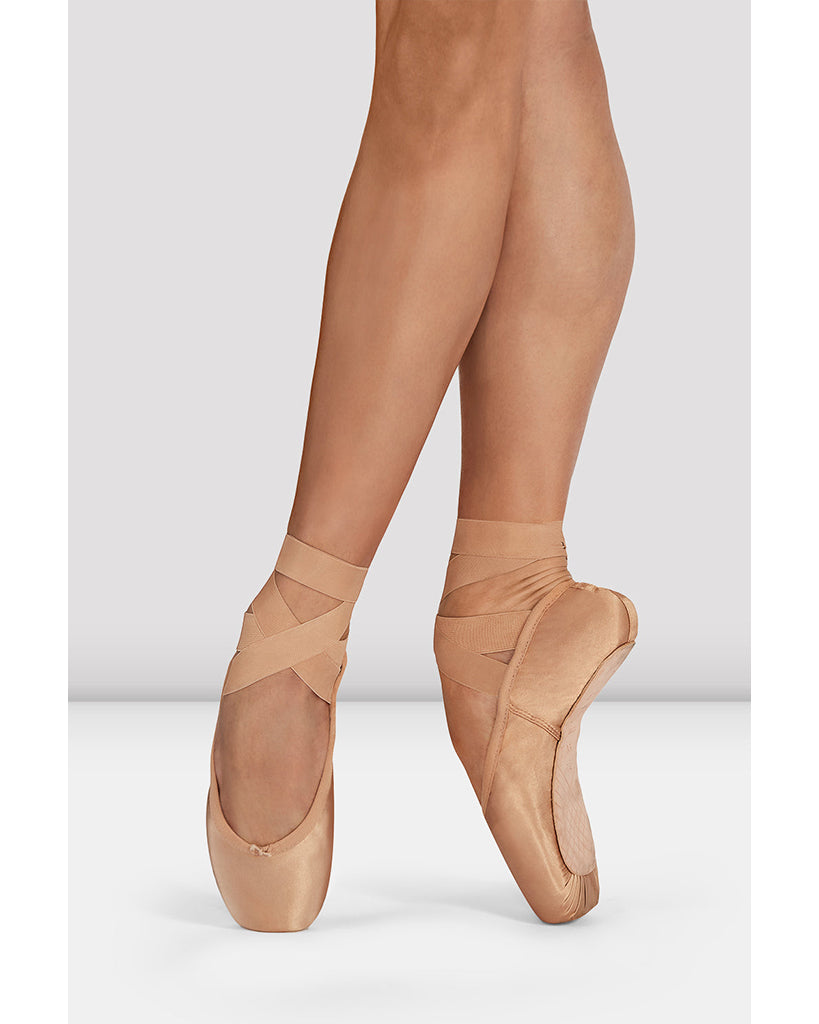What Are Pointe Shoes?
Pointe shoes are specially designed footwear that allows dancers to perform on the tips of their toes, achieving that ethereal look characteristic of ballet. They are an essential tool for any serious ballerina and come in a variety of shapes, sizes, and materials to suit different foot types and styles of dancing.
History of Pointe Shoes
The origins of pointe shoes can be traced back to the early 19th century, when ballerinas began to experiment with dancing on the tips of their toes. The first documented pair of pointe shoes was made for the famous ballerina Marie Taglioni. Over the years, the design has evolved significantly, incorporating advancements in materials and construction techniques to enhance performance and comfort.
Key Features of Pointe Shoes
Pointe shoes consist of several components, each serving a unique purpose:
- Box: The part of the shoe that encases the toes, providing support and structure.
- Shank: The element that gives the shoe its rigidity, allowing the dancer to balance on the toe.
- Sole: The bottom of the shoe that provides traction and durability.
- Vamp: The front part of the shoe that covers the instep.
- Ribbons and Elastic: These components secure the shoe to the dancer’s foot.
Diverse Types of Pointe Shoes
Pointe shoes are not one-size-fits-all. They come in different shapes (e.g., tapered, wide, and square toes) and constructions (e.g., soft, medium, and hard shank). The selection of the right type is crucial for comfort and performance.
Choosing the Right Pointe Shoes
Factors to Consider
Choosing the correct pointe shoes can feel overwhelming, especially for beginners. Below are essential factors to keep in mind:
1. Foot Shape and Size
Every dancer’s foot is unique, and pointe shoes should reflect that. Dancers should have their feet professionally measured to find the best fit.
2. Arch Type and Flexibility
Dancers with higher arches might require shoes with a more robust shank to provide adequate support. Conversely, those with lower arches may benefit from shoes that offer more flexibility.
3. Experience Level
Beginners often opt for softer shoes that allow for more comfort, while advanced dancers might prefer stiffer shoes that support complex movements.

Expert Tips for Fitting Pointe Shoes
Selecting the right pointe shoes is a critical part of a dancer’s training. Here are some expert tips:
- Consult a Professional: Always seek guidance from a certified fitter who understands the nuances of pointe shoe fitting.
- Try Before You Buy: Spend time trying on different brands and styles to see which feels best.
- Break Them In: New pointe shoes may feel stiff and uncomfortable. Gradually break them in during rehearsals for optimal performance.
Real-World Experiences with Pointe Shoes
Case Study: A Beginner’s Journey
Take Sarah, a 12-year-old aspiring ballerina. When Sarah first transitioned to pointe shoes, she faced several challenges. At her local dance studio, her instructor recommended a fitting session where Sarah tried on multiple pairs.
The Fitting Process
With the help of a professional fitter, Sarah discovered that her feet were wider than she initially thought. The fitter suggested a brand known for its wide toe boxes, which significantly improved her comfort level. As Sarah got accustomed to wearing pointe shoes, she found that proper fitting led to better technique and increased confidence in her performances.

Feedback from Advanced Dancers
Professional ballerinas often express that their choice of pointe shoes directly impacts their performance quality. For instance, in a survey conducted by the National Dance Association, 78% of professional dancers stated that the right pointe shoe enhanced their performance.
Different Brands, Different Experiences
The dance community often discusses varying experiences with different brands. While some prefer the classic aesthetics of a well-known brand, others prioritize function and durability.
Comparison Table: Popular Pointe Shoe Brands
| Brand | Type | Key Features | Price Range |
|---|---|---|---|
| Bloch | Classic | Wide range of sizes, durable shank | $60 – $120 |
| Capezio | Versatile | Excellent fit, lightweight materials | $50 – $110 |
| Grishko | Russian Style | Unique box and shank designs | $70 – $140 |
| Sansha | Budget-Friendly | Good for beginners, affordable | $40 – $80 |

Pros and Cons of Different Types of Pointe Shoes
Pros of Pointe Shoes
- Improved Technique: Dancing on pointe can enhance balance and control.
- Visual Appeal: Pointe shoes add an artistic quality to performances.
- Increased Strength: Regular use develops foot muscles and overall strength.

Cons of Pointe Shoes
- Injury Risk: Improperly fitted shoes may lead to injuries.
- Cost: Quality pointe shoes can be expensive, requiring regular replacements.
- Break-in Period: New pointe shoes often need a break-in period, which can be uncomfortable.
Product Highlights

Featured Pointe Shoes of 2023
- Bloch Serenade: A favorite for intermediate dancers, the Serenade features a high vamp and durable construction.
- Capezio Juliet: Known for its elegant design and comfort, this shoe is ideal for beginners.
- Grishko 2007: Favored by professionals, this shoe offers exceptional support and is built to last.
Frequently Asked Questions

1. How long do pointe shoes last?
Pointe shoes generally last between 12 to 20 hours of dancing, depending on the dancer’s weight, technique, and the type of floor surface.
2. What size pointe shoe should I wear?
It is crucial to have your foot professionally measured. Each brand has different sizing charts, so specific sizes may vary.

3. Can I wear tights with pointe shoes?
Most dancers prefer to wear tights with their pointe shoes for a polished look, but it’s not mandatory.
4. How do I care for my pointe shoes?
Keep your shoes dry and store them in a cool, well-ventilated area. Avoiding moisture will prolong their life.
5. What are the best brands for beginners?
Some of the best beginner-friendly brands include Capezio and Bloch, known for their affordability and comfort.
6. Should I buy used pointe shoes?
It’s not advisable to buy used pointe shoes, as they mold to the original owner’s foot shape and may not provide proper support.
7. How can I tell if my pointe shoes fit correctly?
Your toes should gently brush the tip of the shoe without being cramped. There should be minimal space between the heel and the shoe.
8. What is the best way to break in new pointe shoes?
You can break them in by gently flexing the shank and wearing them for short periods during practice sessions.
9. Are there alternatives to pointe shoes?
For those not ready for pointe, some alternatives include ballet slippers, demi-pointe shoes, and various supportive dance footwear that allow for flexibility.
10. How can I prevent injuries while dancing on pointe?
Engaging in strength training, practicing proper technique, and ensuring the right fit of shoes can help prevent injuries.
11. What should I do if I am experiencing pain while dancing on pointe?
If you experience pain, it’s crucial to consult with a professional fitter or a healthcare provider to assess your technique and footwear.
Conclusion
Pointe shoes are more than just footwear; they are an extension of a dancer’s artistry and expression. With the right knowledge and guidance, dancers can choose the best shoes that cater to their unique needs, improving both performance and enjoyment in the studio. By understanding the various types, features, and care tips, dancers can ensure their pointe shoes become allies in their artistic journey.
References
- National Dance Association: Dance Science Research
- American Ballet Theatre: Pointe Shoe Guide